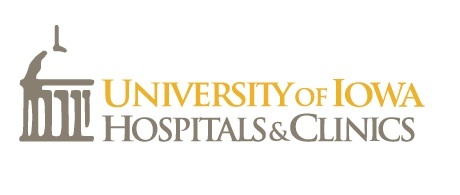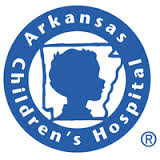An Open-label Study of Hydromorphone Oral Solution in Subjects Aged 28 Days to 16 Years for Postoperative Pain
| Status: | Completed |
|---|---|
| Conditions: | Post-Surgical Pain |
| Therapuetic Areas: | Musculoskeletal |
| Healthy: | No |
| Age Range: | Any - 16 |
| Updated: | 10/14/2017 |
| Start Date: | April 2007 |
| End Date: | April 2010 |
A Multi-center, Open-label, Dose Titration Study Pharmacokinetics/Pharmacodynamics, Safety, and Efficacy of Hydromorphone Oral Solution in Subjects From 28 Days to 16 Years of Age, Who Require Opioid Analgesics for Postoperative Pain
The primary objective of this study is to characterize the pharmacokinetics and
pharmacodynamics of hydromorphone oral solution in pediatric subjects aged 28 days to 16
years inclusive. The secondary objectives are to characterize the safety and efficacy of
hydromorphone oral solution in pediatric subjects aged 28 days to 16 years inclusive.
pharmacodynamics of hydromorphone oral solution in pediatric subjects aged 28 days to 16
years inclusive. The secondary objectives are to characterize the safety and efficacy of
hydromorphone oral solution in pediatric subjects aged 28 days to 16 years inclusive.
Hydromorphone is an opioid analgesic that has been used for decades as an alternative to
morphine in the treatment of moderate to severe malignant and nonmalignant pain. Only a small
number of analgesics have been studied in children. The benefits to the subjects include
contribution of knowledge that will provide for appropriate dosing regimen recommendations
for future pediatric subjects.
Treatment consisted of both parenteral and oral hydromorphone. For up to 48 hours immediately
following surgery, subjects were administered hydromorphone by IV PCA pump. Dosing with the
oral hydromorphone HCl began when the subject was ready to take clear oral liquid. Subjects
were administered oral hydromorphone HCl every 6 hours for up to 9 doses. The investigator
determined the timing of the first dose based on each subject's clinical condition.
The duration of the treatment phase was up to 102 hours (up to 48 hours for the Parenteral
Treatment Period and up to 54 hours for the Oral Treatment Period).
Efficacy was based on the oral hydromorphone treatment. Adverse events were collected for
both the oral and parenteral treatments.
morphine in the treatment of moderate to severe malignant and nonmalignant pain. Only a small
number of analgesics have been studied in children. The benefits to the subjects include
contribution of knowledge that will provide for appropriate dosing regimen recommendations
for future pediatric subjects.
Treatment consisted of both parenteral and oral hydromorphone. For up to 48 hours immediately
following surgery, subjects were administered hydromorphone by IV PCA pump. Dosing with the
oral hydromorphone HCl began when the subject was ready to take clear oral liquid. Subjects
were administered oral hydromorphone HCl every 6 hours for up to 9 doses. The investigator
determined the timing of the first dose based on each subject's clinical condition.
The duration of the treatment phase was up to 102 hours (up to 48 hours for the Parenteral
Treatment Period and up to 54 hours for the Oral Treatment Period).
Efficacy was based on the oral hydromorphone treatment. Adverse events were collected for
both the oral and parenteral treatments.
Inclusion Criteria:
- Pediatric subjects aged 28 days to 16 years,
- Prospective subjects anticipated to have postoperative pain requiring oral opioid
analgesics for at least 24 hours (up to 48 hours) following postoperative parenteral
analgesia (up to 48 hours),
- Prospective subjects have received no more than a total of 7 doses of opioids in the
30 days prior to surgery.
Exclusion Criteria:
- Prospective subjects with clinically significant hepatic or renal dysfunction and
impaired cardiac and/or respiratory reserve,
- Prospective subjects who have received opioid analgesic therapy other than
hydromorphone or morphine sulfate during the up to 48-hour postoperative period prior
to administration of first dose of oral hydromorphone,
- Prospective subjects who have received regional anesthetic blockade OR analgesic
treatment with nonopioid medication within 6 hours prior to administration of first
dose of oral hydromorphone.
Other protocol-specific inclusion/exclusion criteria may apply.
We found this trial at
14
sites
Click here to add this to my saved trials
Click here to add this to my saved trials
Click here to add this to my saved trials
Click here to add this to my saved trials
Click here to add this to my saved trials
Duke Univ Med Ctr As a world-class academic and health care system, Duke Medicine strives...
Click here to add this to my saved trials
Click here to add this to my saved trials
Click here to add this to my saved trials
University of Iowa Hospitals and Clinics University of Iowa Hospitals and Clinics—recognized as one of...
Click here to add this to my saved trials
Arkansas Children's Hospital Arkansas Children's Hospital (ACH) is the only pediatric medical center in Arkansas...
Click here to add this to my saved trials
Click here to add this to my saved trials
Click here to add this to my saved trials
Click here to add this to my saved trials
Stanford Univ Med Ctr The Medical Center is uniquely advantaged by its location on the...
Click here to add this to my saved trials



